
Apple II
Posted by musovern on Apr 3rd, 2018 in Apple, Vintage Computers | 0 comments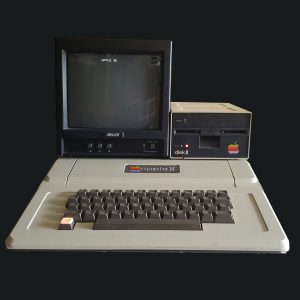
Apple II was the successor to the Apple 1, on which it was largely based. It was the very first commercial success of the Apple Computer Company. Because Steve Wozniak wanted to demonstrate his Breakout game with the new Apple II, he decided to add colour, sound and minimum paddle support to the Apple 1 heir.
Apple II came with 4 KB RAM, but it was possible to add 4 KB or 16 KB RAM chips. Thus, the system could have memory in the following sizes: 4K, 8K, 12K,16K, 20K, 24K, 32K, 36K, or a full 48K. This was one of the strong points of the Apple II: from the beginning, it was designed with expansion in mind. The 8 expansion slots were further proof of that – users could expand their system easily, just by plugging cards into the slots.
The ROM included the monitor, a 6502 disassembler, ‘Sweet 16’ a 16-bit CPU emulator and the Integer Basic written by Wozniak in machine language, assembled by hand on paper! Not having to load a language from tape or disk to start programming was also a significant advantage over competitors. Even the innovative plastic case proved to be an important feature to attract customers.
Just a few months after the Apple II presentation at the first West Coast Computer Fair in April 1977, Apple received about three hundred orders for the Apple II, over a hundred more than the total number of Apple 1’s sold.
Apple II was followed in 1979 by the Apple II+, which brought some enhancements.
NAME: APPLE II
MANUFACTURER: Apple
TYPE: Home Computer
ORIGIN: U.S.A.
YEAR: April 1977
END OF PRODUCTION: 1980
BUILT IN LANGUAGE: Integer Basic
KEYBOARD: Full-stroke keyboard (upper case support only)
CPU: MOS 6502
SPEED: 1 MHz
RAM: 4 KB (64 KB max)
ROM: 12 KB (Monitor, Integer Basic, “Sweet 16” mini-assembler)
TEXT MODES: 40 x 24, 80 x 24 (with 80-column card)
GRAPHIC MODES: 40 x 40-48 (16 colors), 280 x 192 (4 colors)
COLOURS: 16
SOUND: One channel beeper
SIZE / WEIGHT: 39.2 (W) x 45.4 (D) x 11.8 (H) cm
I/O PORTS: Composite monitor, Internal slots (8), Tape recorder In/Out jacks
POWER SUPPLY: Built-in switching power supply unit
PERIPHERALS: All Apple and third-parties cards and peripherals
PRICE: $1298 (1978, USA)


- Have repaired power supply
- Video working now
- RAM fault to sort out.
- Keyboard not working
UPDATE:
Have now fixed the RAM fault and the keyboard problem, it’s all working as it should.
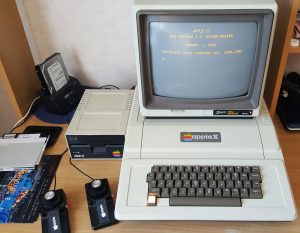
Now boots into DOS 3.3
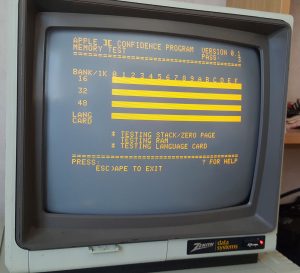
Passed all RAM tests
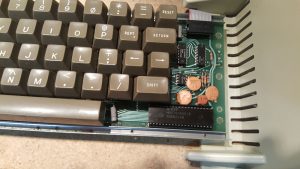
The early Rev keyboard encoder
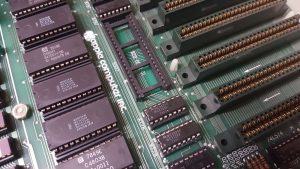
This is the Rev 1 Motherboard

And a low serial number under 10,000 must of been one of the first into New Zealand
Leave a Reply